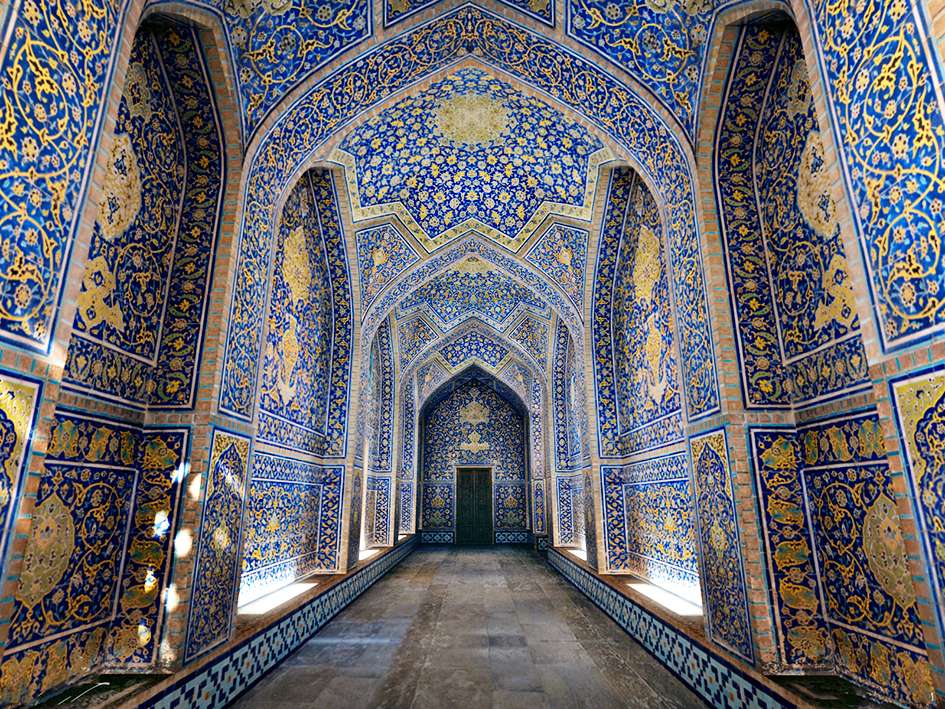A Review of the History of the Isfahan Seminary

First Period
According to historical accounts, the first period of the Isfahan seminary dates back to the reign of the Buyid dynasty, during which Abu Ja’far ‘Ala al-Dawla Kakuyid governed Isfahan. It was at this time that Avicenna (Ibn Sina) came to him. The Isfahan School is a legacy of that era.
Alā’ī School
During the time of Emir ‘Ala al-Dawla Kakuyid, while Avicenna was in his service in Isfahan, he taught in addition to carrying out his ministerial duties. A dome called the Abu ‘Ali–’Alā’ī Dome exists in the Dardasht district near the Shafi’i School in Isfahan. It is said that Avicenna taught there and that it belonged to a school of that time.
Abu ‘Abdullah Ma’sumi was one of the great Islamic scholars and philosophers, a master in the fields of philosophy and wisdom. He was born in Isfahan, studied there, and became highly proficient in both natural and Islamic sciences.
While Sheikh al-Ra’īs (Avicenna) was in Isfahan, Abu ‘Abdullah regularly accompanied him and furthered his philosophical knowledge. Avicenna reportedly preferred him over other students. It is said that when al-Biruni sent 18 philosophical questions to Avicenna, he delegated the task of answering them to Abu ‘Abdullah, highlighting his intellectual depth.
Second Period
This period coincided with the Seljuk era. During this time, Nizam al-Mulk initiated a movement to establish schools, intertwined with religious and political rivalries. Due to this, the history of the Shia seminary remains unclear. Though the author of History of Schools in Iran refers to six schools from this era, their Shia identity is questionable.
It is safe to say that from the second half of the 5th century AH until the Mongol invasion, and from then until the reign of Ghazan Khan of the Ilkhanid dynasty (694–703 AH), Iran experienced political and cultural unrest. When Ghazan came to power, he converted from Buddhism to Islam and was named Mahmoud. He rejected the authority of the Great Khan in China, established extensive reforms, and enacted regulations that had remarkable outcomes.
Following Ghazan, nearly 100,000 Mongols embraced Islam. His successor, Öljeitü (703–716 AH), who leaned toward Shia Islam, was titled “Muhammad Khodabandeh” by the Shia community.
From then until the fall of the Ilkhanid dynasty, Islam became the official religion of the state, and governance was based on Islamic law and tradition. The Ilkhans of Iran ceased their subordination to the Great Khan in Khanbaliq (Beijing), severing ties over time.
Prominent seminaries in Isfahan during this era include:
Baba Qasim School
Imamiyyah School (near the Jameh Mosque)
‘Ismatiyyah School
Dardasht School
Shahshahan School
Sadr al-Din ‘Ali School (including three sub-schools)
Uzun Hasan School
Baqiriyyah School
Turkish School
Darb-e Kushk School
Khwaja Malik Mustawfi School
Third Period
This was one of the most prosperous periods for the Isfahan seminary. With the invitation of scholars from Jabal ‘Āmil to Iran and Isfahan’s prominence during the Safavid era, the seminary reached its zenith. In contrast to the second period—when Nizam al-Mulk established schools to promote the Shafi’i sect—the third period saw the rise of Shia schools across Iran, including remote areas.
However, the spread of superstition, moral decay, materialism, and neglect of sciences and literature contributed to the Safavid decline.
Jabal ‘Āmil had long been a Shia university and a center for Islamic sciences such as hadith, fiqh, principles of jurisprudence, exegesis, theology, and ethics. Shah Isma’il’s turn toward Shiism and his invitation to Shia jurists sparked a revival in Shia thought. Although Shiism existed in Iran from the first and second centuries AH, the acceptance of scholars from Jabal ‘Āmil marked a new phase.
Among those who migrated to Iran were:
‘Ali ibn ‘Abd al-‘Āli al-Karaki (870–940 AH)
Kamāl al-Dīn Darwish Muhammad ibn al-Hasan al-‘Āmili
‘Ali ibn Hilāl al-Karaki (d. 993 AH)
Husayn ibn ‘Abd al-Samad al-Juba‘i (918–948 AH)
Baha’ al-Dīn al-‘Āmili (953–1030 AH)
To promote Shia thought, a wave of translations and writings followed. Among the important translated works of this period were:
Kashf al-Ghummah fi Ma’rifat al-A’immah
Wasīlat al-Najāt (on beliefs) by Shaykh al-Saduq, translated by Zawārah’i
Sahīfat al-Sajjādiyyah, translated by Mulla Muhammad Sālih Rughani Qazvini
Commentary on Arba’īn Hadīth, translated by Sayyid Muhammad ibn Muhammad Bāqir Khātunābādi
Manhaj al-Sādiqīn (Tafsir), translated by Fath Allah Kāshāni
Commentary on Nahj al-Balāghah by Fath Allah Kāshāni
Miftāh al-Najāh, translation of Uddat al-Dā’ī by Ahmad ibn Fahd al-Hilli, translated by ‘Ali ibn Husayn Zawārah’i
This period saw great strides in Shia theology, jurisprudence, hadith, mathematics, astronomy, and the cultural spread of Shiism. The three major hadith compilations of this period are:
Wasā’il al-Shī‘ah by Muhammad ibn al-Hasan al-Hurr al-‘Āmili (1033–1104 AH)
Al-Wāfi by Fayz Kāshāni (1010–1090 AH)
Bihār al-Anwār by Muhammad Bāqir al-Majlisi (1037–1111 AH)
Scholarly Titles During the Safavid Era
The Safavid state arose from Sufism and evolved into a political-religious system. The “Qutb” (Sufi leader) took on a role similar to the Shia Imam in political affairs. However, not all spiritual leaders held the authority of Imams, and spiritual guardianship (wilāyah) could not belong to just any Sufi.
Thus, three major powers emerged under the Safavids:
Sufism
Monarchy
Shia jurists as deputies of the Imam al-Mahdi (may God hasten his reappearance)
Shah Isma’il, recognizing the need for religious legitimacy, appointed a prominent jurist as Sadr. Due to this need, many Lebanese scholars migrated to Iran.
When al-Muhaqqiq al-Karaki moved to Iran, his scholarly status surpassed that of the Sadr, so he was granted the title Shaykh al-Islam. While the Sadr had administrative duties, the Shaykh al-Islam focused more on religious rulings and fatwas.
Other common titles in this era included Mujtahid, Imam (prayer leader), Mudarris (teacher), Qadi (judge), and Mufti (legal scholar), each with its own religious and social status.
The Philosophical Seminary of Isfahan
As noted, Avicenna once taught rational sciences in Isfahan during the first period. From the 4th and 5th centuries AH, Isfahan became acquainted with philosophy. Though Avicenna’s stay was brief, unlike Hamadan which became a center of philosophy due to his prolonged presence, Isfahan’s philosophical seminary didn’t flourish at the time.
Its true rise came during the Safavid era, under scholars like Mir Dāmād, Shaykh Bahā’ī, and Ṣadr al-Muta’allihīn al-Shirāzī. From the 11th to the 13th century AH, Isfahan became a hub for philosophical and rational sciences. Eventually, with the migration of Mullā ‘Abdullāh Zunūzī (Āqā Hakīm) to Tehran in the 13th century AH, the intellectual center shifted there.
It should be noted that the departure of Ṣadr al-Muta’allihīn to Qom caused a temporary decline in philosophical studies in Isfahan. However, other students of Mir Dāmād continued the tradition there until the 13th century AH. Meanwhile, Qom, enriched by Ṣadr al-Muta’allihīn and his students, became the center of ḥikmat muta‘āliyah (transcendent philosophy).
Scholars of the Isfahan Seminary
The Isfahan seminary is among the rare ones that attracted the largest number of migrating scholars. It benefited from other major Shia centers such as Jabal ‘Āmil, Aḥsā’, and Bahrain. Notable scholars include:
Muhammad Bāqir Dāmād (969–1041 AH)
Shaykh Bahā’ī (d. 1030 AH)
Mullā Muhammad Taqī Majlisī
‘Allāmah Muhammad Bāqir Majlisī (1037–1111 AH)
Sayyid Ni‘matullah Jazā’irī
Ayatollah Mujāhid Sayyid Ḥasan Modarres (1287–1357 AH)
Ayatollah Mirzā Muhammad Jawād Isfahani (1240–1312 AH)
Ayatollah Mirzā Ahmad Bīdābādi (1279–1357 AH)
Ayatollah Mirzā Muhammad ‘Ali Shāhābādi (129–1369 AH)
Ayatollah Ḥāj Āqā Ḥusayn Khādamī (1319–1405 AH)
Women Scholars in Isfahan
From early times, the households of prominent scholars were centers of education open to all, not just men. Among these, the noble family of ‘Allāmah Majlisī produced several learned women in fiqh, usūl, hadith, and more.
In modern times, the distinguished female jurist Lady Nusrat Amin stands out as a scholar and writer of the Isfahan seminary. She was born in 1308 AH (1890 AD) in Isfahan and, after learning the Qur’an, pursued religious sciences, ultimately reaching the level of ijtihād (independent legal reasoning).
Her teachers included:
Ḥujjat al-Islām Ḥāj Āqā Ḥusayn Niẓām al-Dīn Kachū’ī
Ḥujjat al-Islām wa al-Muslimīn Āqā Mīrzā ‘Alī Aṣghar Sharīf
Ayatollah Sayyid Abū al-Qāsim Dehkhordī
Ayatollah Mīrzā ‘Alī Āqā Shīrāzī
Ayatollah Ḥāj Mīr Sayyid ‘Alī Najafābādī
Her works include:
Arba’īn al-Hāshimiyyah
Tafsīr Makhzan al-‘Irfān (15 volumes)
Translation of Tahdhīb al-Akhlāq by Ibn Miskawayh
Nafahāt al-Raḥmāniyyah
She also established educational institutions such as:
Amin Girls’ High School (est. 1344 SH / 1965 AD)
Maktab-e Fāṭimah (‘a), where she personally taught
Her distinguished students include:
‘Alawiyyah Zaynab al-Sādāt Homāyūnī
‘Alawiyyah ‘Iffat al-Ḥājiyyah Iftikhār Amīn
Fakhr al-Sādāt Abṭaḥī
This great lady passed away in 1403 AH (June 1983).

